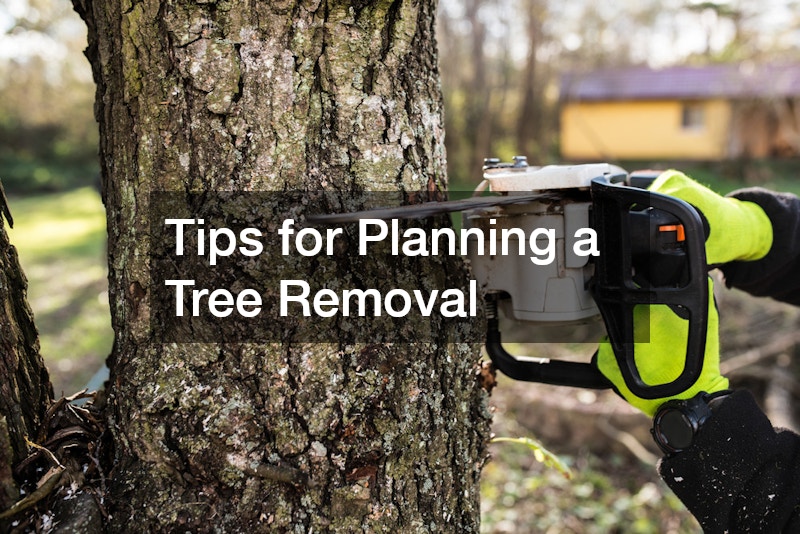Tree removal can be a daunting task for homeowners. Whether it’s due to safety concerns, aesthetic reasons, or space considerations, removing a tree requires careful planning. This article provides practical tips to ensure a smooth and efficient tree removal process.
When is Tree Removal Necessary?
Assessing Tree Health and Safety
Deciding to remove a tree often begins with an evaluation of its health and structural integrity. Homeowners should look for signs such as dead branches, fungal growth, or cracks in the trunk which may indicate potential hazards.
Regular inspections can help identify issues early, minimizing risks to property and personal safety.
Furthermore, diseases or infestations affecting a tree may necessitate its removal to protect surrounding greenery. For instance, a diseased tree can become a breeding ground for pests that could spread and harm neighboring trees. In such cases, proactive removal is a strategic step towards maintaining landscape health.
It’s important to consult with an arborist to accurately assess whether a tree poses a danger. Arborists have the expertise to diagnose problems and suggest remedial actions, preventing unnecessary tree loss. They can also provide insights into other factors needing consideration, such as soil stability and future growth potential.
Legal and Environmental Considerations
Before embarking on a tree removal project, it’s crucial to understand the local regulations and permits that may be applicable. Many regions have laws governing the removal of certain types of trees, especially those that are indigenous or have historical significance. Obtaining the necessary permits can prevent legal issues and potential fines.
Environmental considerations should also play a role in the decision-making process. Removing a tree can significantly impact the local ecosystem and biodiversity. Therefore, where possible, replacement planting after removal may be encouraged to offset ecological losses.
Additionally, some municipalities offer incentives for sustainable tree management practices. These incentives can include tax breaks or subsidies for property owners who adhere to environmentally friendly procedures. Being informed about these provisions can be beneficial both environmentally and financially.
How to Choose a Tree Removal Service
Evaluating Credentials and Experience
Selecting the right tree removal service begins with a thorough evaluation of their credentials and experience. A qualified service should possess necessary certifications from recognized arboricultural organizations. These certifications demonstrate a commitment to standards and safety in tree care and removal.
Experience is equally important in choosing a service provider. Reviewing their portfolio of past work and speaking with previous clients can provide insights into their expertise and reliability. An experienced team will have a track record of safely and effectively managing tree removals, even in challenging situations.
Conducting diligence in this area reduces risks associated with the removal process. Ensuring that the chosen contractor is equipped with the proper insurance coverage is also essential. This provides homeowners with peace of mind, knowing that liability is appropriately managed.
Understanding Service Estimates and Contracts
Interpreting service estimates and contracts is crucial for avoiding misunderstandings and unexpected costs in a tree removal project. An estimate should clearly outline all the services to be provided, including removal, debris cleanup, and stump grinding if applicable. Breakdown of costs helps in comparing different service providers transparently.
Contract details should be thoroughly reviewed to ensure that all parties are aligned on project scope and terms. Important aspects to confirm include timelines, payment schedules, and responsibilities regarding property damage or incidents. A well-documented agreement sets clear expectations and is a vital part of project management.
Additionally, clear communication with the service provider regarding any additional fees that may arise during the project is advisable. This can prevent budget overruns and facilitate smoother project execution. Good contractors will be transparent about potential challenges and costs that may not have been evident during initial assessments.
Planning a tree removal can be streamlined with the right knowledge and preparation. By understanding when removal is necessary and choosing a qualified service, you can safely and effectively manage tree removal on your property. Prioritizing a structured approach with attention to legal, environmental, and contractual nuances leads to a successful outcome.
Being proactive in assessing tree health and consulting professionals ensures that necessary removals are performed with minimal risk. Proper preparation and informed decision-making not only protect your property but also contribute to maintaining the integrity of the surrounding environment. With these tips, homeowners can navigate tree removal confidently and responsibly.
.


